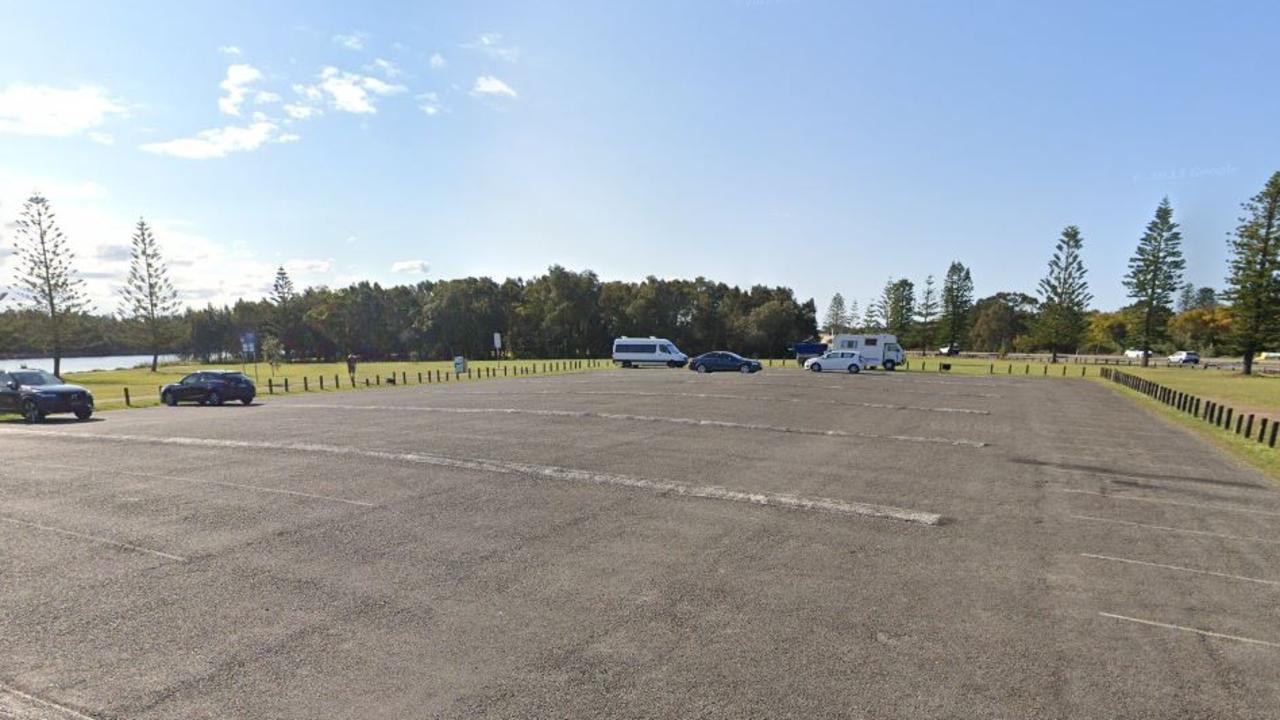Soft coral NSW: species found in Brisbane Water, Botany Bay, Port Stephens
It’s bright pink. It can inflate and deflate. Seahorses love it and it’s been found on the coast. Extraordinary photos reveal the secret life of soft coral.
At the entrance to Brisbane Water, where the tide surges fiercely in and out along Ettalong channel, an extraordinary creature lurks beneath the waves.
Bright pink with feathery white tentacles that trawl the passing current for food, this beautiful species of soft coral is little understood and has only recently been studied by science.
Extraordinary pictures and video taken by researchers show examples of the species covered in seahorses and other marine animals and reveal that it can inflate and deflate with the ebb and flow of the tides.

The coral was first found at Port Stephens north of Newcastle but populations have now been uncovered in Brisbane Water on the Central Coast, in Sydney’s Botany Bay and as far south as Jervis Bay.
They’ve even been found on the wreck of the HMAS Adelaide which was sunk as a dive site off Avoca Beach in 2011.
Central Coast Council is funding a study of the little known species to help determine how to protect it in the future
Sydney Institute of Marine science will share the “hidden wonder of NSW corals” at a special event on August 10 as part of UNSW x Sydney Science Festival.
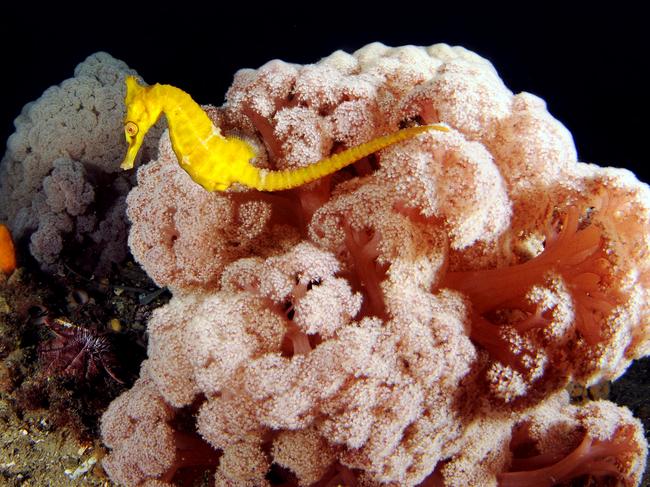
UNDERWATER DRONE
University of Newcastle senior lecturer in environmental science Dr Troy Gaston is leading Central Coast soft coral research and said the biggest population so far had been found of Lobster Beach, with few individuals being found upstream of the Rip Bridge.
“The Brisbane Water soft corals are unusual. They are happy living near or in sea grass or in bare sediment — pretty much wherever the water is flowing fast enough — where lots of food comes past,” Dr Gaston said.
Dr Gaston’s team are using remote controlled underwater vehicles to study the soft coral because they can stay down longer than human divers and because the high flow environment presents some diver safety challenges.

“We are getting all this video footage of everything that is living around the coral and we’ve actually found that the remote vehicle doesn’t scare away the fish like a diver would — we see a lot more species than if we had a human diver doing the survey,” he said.
At one stage the video camera was trained on an individual coral when a pair of mating octopuses glides into view — a never before recorded event in Brisbane Water.
“The corals can grow as individuals or in colonies — sometimes densely packed, sometimes sparse — they inflate and deflate with the currents and tides.
“What we find is Brisbane Water is that they seem to be a little bit smaller physically — they don’t inflate as much — but we don’t know why. Is it a new colony or an old colony? Is it a sub species? All these questions we are trying to answer.”
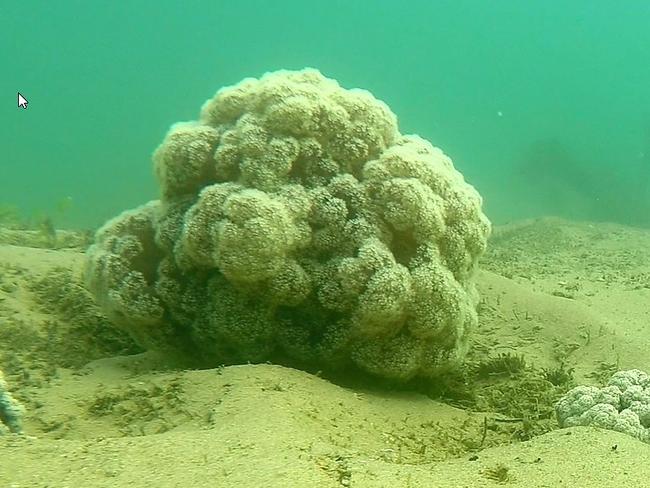
Dr Gaston said researchers were also trying to work out what other organisms were associated with the coral.
“There’s a particular species of white seahorse that is pretty much only found on these soft corals because other habitats they would attach to are disappearing — there’s a lot of science happening around things like that,” he said.
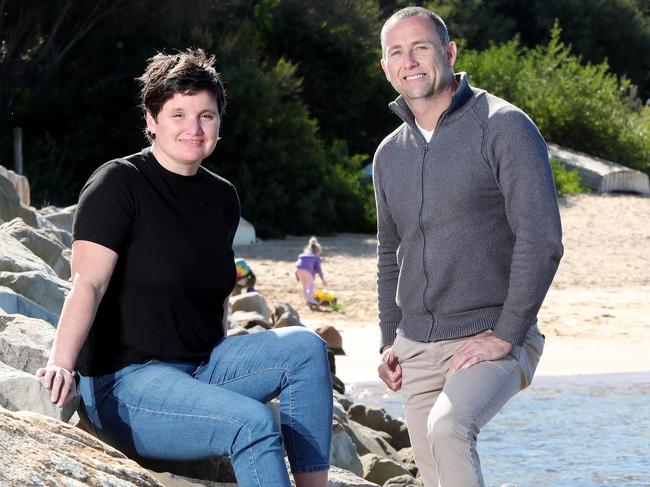
BIG AND BEAUTIFUL
University of NSW Associate Professor of marine biology and coral expert Tracy Ainsworth is unashamedly fascinated by the local coral.
She’ll be presenting the hidden wonders of NSW coral talk next month.
“They are a really interesting and different — they settle in the sand — they have some really interesting behaviours, to cope with in these environments that we don’t know much about,” she said.
“They are sensitive to sediment — when they get covered in sediment they contract and shrink themselves down and when the sediment is gone they expand themselves out again
“They really don’t like sediment — and that’s one of the thing’s that is being investigated — what is the impact of sediment in the waterways on these types of populations — how are they affected — what happens to them when they get smothered in sediment?”
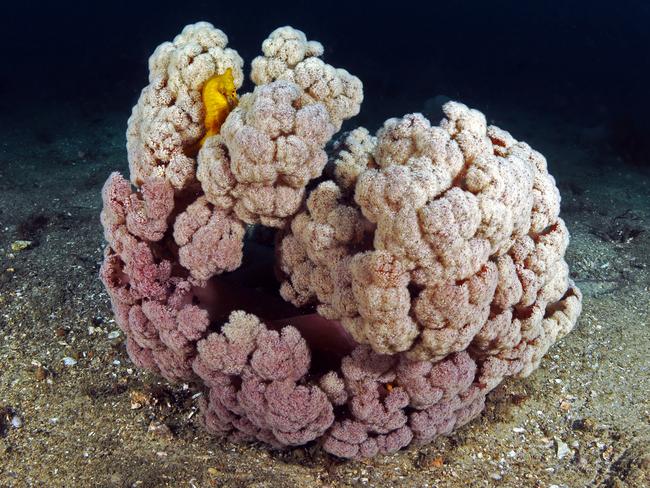
Professor Ainsworth said she had worked on corals of the Great Barrier Reef for almost 20 years and moved to NSW just to study the unusual NSW corals.
“It’s amazing they are here at all — a beautiful big pink coral that is home to other invertebrates, which is here in the cool water where I didn’t expect to find them,” she said.
“I’m blown away that living on the Central Coast I am closer to corals than when I lived in Queensland.
“This place is amazing — you have little penguins over there on Lion island and soft corals here in the estuary — it’s incredible and it’s beautiful,” she said.

CORAL FACTS
Soft corals have a flexible, sometimes leathery, appearance. Although many resemble plants, they are actually animals.
Soft corals are formed of colonies of polyps. The polyps of soft corals have eight feathery tentacles, which is why they are also known as octocorals.
One way to tell the difference between soft corals and hard corals (like those of the Great Barrier Reef) is that the polyps of hard corals have six tentacles, which are not feathery.


